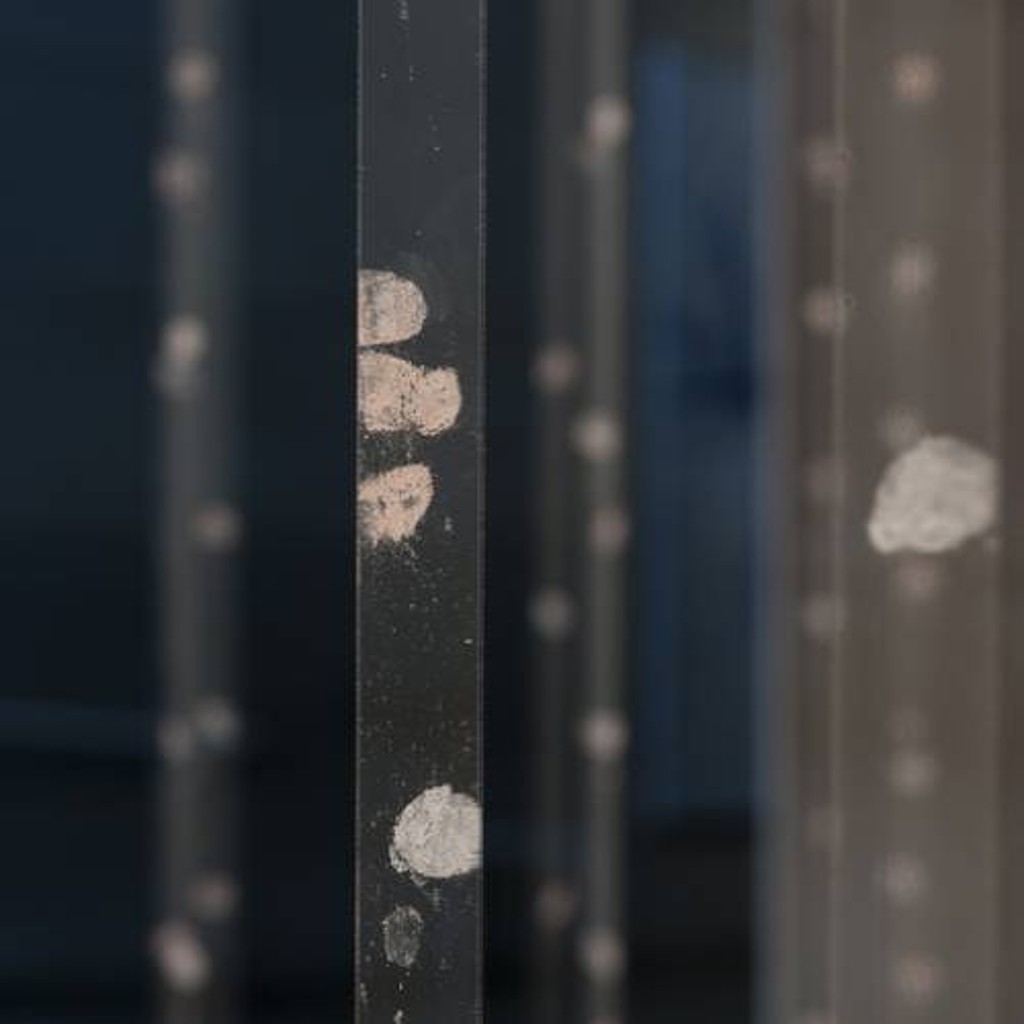Karla Black
13 Dec 2013 - 09 Mar 2014

Karla Black, Exactly That, 2012 (detail)
Plaster powder, powder paint, cellophane and sellotape 360 x 760 x 435 cm
Installation view at the Dallas Museum of Art, 2012
Photo: Chad Redmon
Plaster powder, powder paint, cellophane and sellotape 360 x 760 x 435 cm
Installation view at the Dallas Museum of Art, 2012
Photo: Chad Redmon
KARLA BLACK
13 December 2013 – 09 March 2014
The kestnergesellschaft presents new works by the Scottish artist Karla Black (*1972 in Alexandria, Scotland) in an extensive solo exhibition. On the upper floor of the kestnergesellschaft, Black created enormous site-specific sculptures from materials such as sellotape, chalk, foam, sawdust and soil.
Karla Black is well known for her use of unusual materials, such as cosmetics and toiletries: lipstick and nail varnish, mascara and deodorant, hair spray and tanning lotion are used as painterly and sculptural elements in her work. She doesn’t so much apply these products to beautify her works, but rather as an uncontrollable or destructive factor. Consequently, attractive and repellent components are played out against one another; form and formlessness mingle. In the kestnergesellschaft Karla Black will install sculptures made out of stripes of sellotape hung from the ceiling – on the one hand minimal and pure, as a ready-made, on the other individual and expressive, with her fingerprints. Black will also produce works with sheets of cellophane, which she produced by being physically involved, touching or walking over these sheets. The paint then applied only remains on the grease-free, untouched areas. This method shows how close the artist’s sculptures are to performance: the body is used as a compositional device leaving direct or indirect traces.
Through their dominant pastel tones like pink, turquoise and light yellow, Karla Black’s works are often wrongfully perceived as decisively feminine. However, Black is not concerned with feminist issues, instead she is obsessed with materials and forms. Despite the apparent randomness and lightness of these materials, the sculptures are produced on site over several weeks and with precise gestures.
In terms of references, the sculptures recall nuanced landscapes, decorations and confectionary. Karla Black takes up the motifs and palette of the Impressionists as much as the reductionism of modernist painting. Her installations are never unequivocally figurative, but display an elegant balance between abstraction and expression, between construction and destruction.
Karla Black represented Scotland at the Venice Biennial in 2011 and has been nominated for the Turner Prize. She had solo exhibitions at the ICA in Philadelphia (2013), the Gemeentemuseum in Den Haag (2013), the Dallas Museum of Art (2012), the Migros Museum in Zurich (2009) among others. Black’s work is in important museum collections, such as the Tate Modern, the Guggenheim Museum and the Hammer Museum in Los Angeles. Leading art historians, including Briony Fer (University College London), have written about her work.
13 December 2013 – 09 March 2014
The kestnergesellschaft presents new works by the Scottish artist Karla Black (*1972 in Alexandria, Scotland) in an extensive solo exhibition. On the upper floor of the kestnergesellschaft, Black created enormous site-specific sculptures from materials such as sellotape, chalk, foam, sawdust and soil.
Karla Black is well known for her use of unusual materials, such as cosmetics and toiletries: lipstick and nail varnish, mascara and deodorant, hair spray and tanning lotion are used as painterly and sculptural elements in her work. She doesn’t so much apply these products to beautify her works, but rather as an uncontrollable or destructive factor. Consequently, attractive and repellent components are played out against one another; form and formlessness mingle. In the kestnergesellschaft Karla Black will install sculptures made out of stripes of sellotape hung from the ceiling – on the one hand minimal and pure, as a ready-made, on the other individual and expressive, with her fingerprints. Black will also produce works with sheets of cellophane, which she produced by being physically involved, touching or walking over these sheets. The paint then applied only remains on the grease-free, untouched areas. This method shows how close the artist’s sculptures are to performance: the body is used as a compositional device leaving direct or indirect traces.
Through their dominant pastel tones like pink, turquoise and light yellow, Karla Black’s works are often wrongfully perceived as decisively feminine. However, Black is not concerned with feminist issues, instead she is obsessed with materials and forms. Despite the apparent randomness and lightness of these materials, the sculptures are produced on site over several weeks and with precise gestures.
In terms of references, the sculptures recall nuanced landscapes, decorations and confectionary. Karla Black takes up the motifs and palette of the Impressionists as much as the reductionism of modernist painting. Her installations are never unequivocally figurative, but display an elegant balance between abstraction and expression, between construction and destruction.
Karla Black represented Scotland at the Venice Biennial in 2011 and has been nominated for the Turner Prize. She had solo exhibitions at the ICA in Philadelphia (2013), the Gemeentemuseum in Den Haag (2013), the Dallas Museum of Art (2012), the Migros Museum in Zurich (2009) among others. Black’s work is in important museum collections, such as the Tate Modern, the Guggenheim Museum and the Hammer Museum in Los Angeles. Leading art historians, including Briony Fer (University College London), have written about her work.
